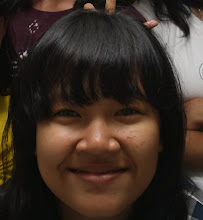Young women from countries under Japanese Imperial control were reportedly abducted from their homes. In some cases, women were also recruited with offers to work in the military. It has been documented that the Japanese military itself recruited women by force. However Japanese historian Ikuhiko Hata stated that there was no organized forced recruitment of comfort women by the Japanese government or military.
The number and nature of comfort women servicing the Japanese military during World War II is still being actively debated, and the matter is still highly political in both Japan and the rest of the Far East Asia.
Many military brothels were run by private agents and supervised by the Japanese Army. Some Japanese historians, using the testimony of ex-comfort women, have argued that the Imperial Japanese Army and Navy were either directly or indirectly involved in coercing, deceiving, luring, and sometimes kidnapping young women throughout Japan's Asian colonies and occupied territories.
Mardiyem is an orphan who daily work as servants in the palace with the task of taking care of horses and carriages. Age 13 years when the local Japanese authorities opened an opportunity for girls to be a showman. Because fond of singing, he went to register. Those selected must undergo a medical examination. "My brother did not you want to ride the boat, far away Borneo could two to three days on the ship, so his body should be healthy ...," the reasons given Soesroedoro physician's assistant who opened the practice in the area Panembahan, Yogyakarta, told Mardiyem who knows only that he would join a play group Pantja Soerja in Borneo.
 Mardiyem addition, there are about 40 other girls aged between 16-22 years are superimposed to a boat to Borneo in August or September 1942. Only Mardiyem and three other girls who just turned 13 years old, namely Soetarbini from Tedjokusuman, Karsinah from Tamansari, and Jaroem from Sosrowijayan. One ship, but all sorts of hope that kept the women who were transported from Java to Borneo's. Mardiyem expect him to be a player plays according to promise, but there are others who expect a job as a housemaid or houseboy to eat. When they finally landed in Borneo, the fate that awaits utterly beyond any hope of that ever existed on the ship.
Mardiyem addition, there are about 40 other girls aged between 16-22 years are superimposed to a boat to Borneo in August or September 1942. Only Mardiyem and three other girls who just turned 13 years old, namely Soetarbini from Tedjokusuman, Karsinah from Tamansari, and Jaroem from Sosrowijayan. One ship, but all sorts of hope that kept the women who were transported from Java to Borneo's. Mardiyem expect him to be a player plays according to promise, but there are others who expect a job as a housemaid or houseboy to eat. When they finally landed in Borneo, the fate that awaits utterly beyond any hope of that ever existed on the ship. After the war, the punishment was not less cruel society. They unilaterally declared a moral flaw, simply because they are considered 'old whore'. To avoid discrimination, many of them choose to hide their past or living isolate themselves in grief and misery to end their lives. They are the victims of humanitarian crimes that never get any assistance to heal the physical, mental as well as their deep inner. They really took it all alone in this. There was never any official recognition from any party that they actually are victims of crimes against humanity and deserved justice.
After the war, the punishment was not less cruel society. They unilaterally declared a moral flaw, simply because they are considered 'old whore'. To avoid discrimination, many of them choose to hide their past or living isolate themselves in grief and misery to end their lives. They are the victims of humanitarian crimes that never get any assistance to heal the physical, mental as well as their deep inner. They really took it all alone in this. There was never any official recognition from any party that they actually are victims of crimes against humanity and deserved justice.In 1993, ex Jugun ianfu Mardiyem become the first Indonesian to complain of his fate companion law, namely to LBH Yogyakarta, as a first step to pioneer the struggle to find justice for Indonesian women who were forced into sexual slavery by Japanese military authorities during the occupation period from 1942 to 1945 . Two years later, accompanied by LBH Yogyakarta Mardiyem go to Japan for the first open problem ianfu Jugun Indonesia in international forums. A year later Mardiyem got an invitation from one of his lecturers Japan to promote his testimony as a Jugun ianfu on campuses Sakura Affairs.
 In the final moments, Mardiyem give a message to the Indonesian government in order to disseminate Jugun ianfu to the young generation and to streamlining the curriculum history of education in Indonesia, especially about who and why is there Jugun ianfu. Mardiyem not agree terms mean Jugun ianfu equated with a 'pelacur', as currently exist in schools history books.
In the final moments, Mardiyem give a message to the Indonesian government in order to disseminate Jugun ianfu to the young generation and to streamlining the curriculum history of education in Indonesia, especially about who and why is there Jugun ianfu. Mardiyem not agree terms mean Jugun ianfu equated with a 'pelacur', as currently exist in schools history books.source:
http://jugunianfuindonesia.org/
http://langitperempuan.com/
http://swaramuslim.net/
http://sejarahkita.blogspot.com/
http://detiknews.com/
http://koalisiperempuan.or.id/
http://opinibureto.blogspot.com/





































3 komentar
Label: History